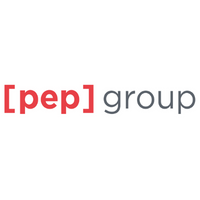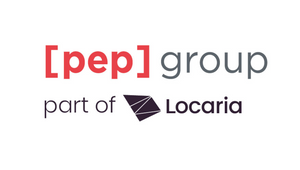
“The Content Creation Industry Landscape Has Changed Definitively and with That Comes Opportunity”
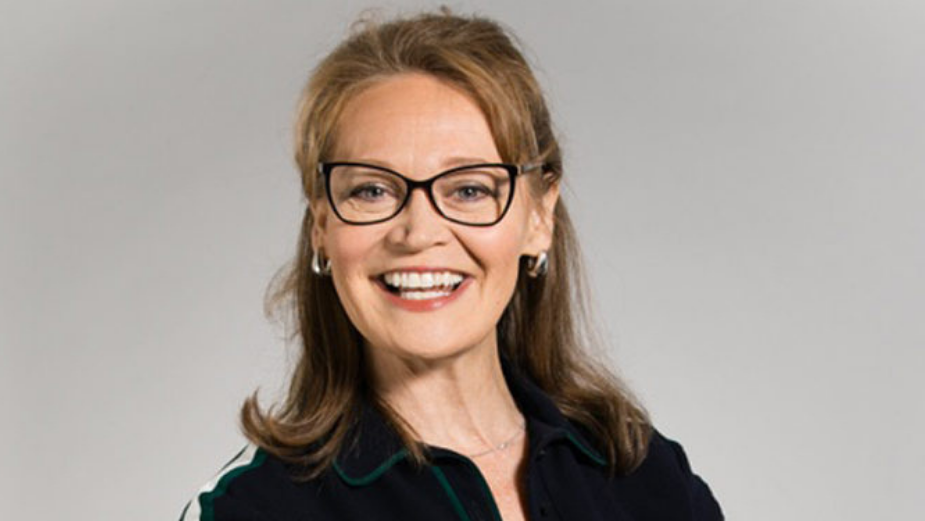
Pepelatz Production is a proud supporter of LBB. Over the upcoming months, as part of the sponsorship of the Ukrainian edition, we will be spending time with some of the personalities at the forefront of the global production industry today.
In this conversation, we speak with Jillian Gibbs, founder and global CEO of APR, about the ability to adapt alongside the production industry’s evolution.
LBB> The production industry is reshaping with both brands and agencies in-housing at the same time. How is that impacting production?
Jillian Gibbs> A marketer now must look at alternative approaches to production that include leveraging their own in-house teams, agency’s in-house teams, and other third-party solutions to meet demand and take advantage of new approaches in effective and agile ways. The ability to navigate and decide “who does what and how” is key to delivering the best work at the best value. About half of our 60+ clients assign some work to in-house teams and the others rely solely on their agencies. There is no one-size-fits-all solution in today’s world.
I have always found that it is important to understand what each in-house team is really good at and then utilise each in a way that serves them and the marketing initiatives best.

LBB> Do you think brand CMOs now need a better understanding of end-to-end creative production?
Jillian> Yes, since there are many new models and approaches to creative production and many marketers continue to take back control, knowledge is power. Having a better understanding of the end-to-end creative production process - and the role it plays in the broader marketing landscape - is ideal to discover and explore new ways of working smarter.
LBB> For a big international client, what do you see as the best approach? Do you think they should have centres of excellence or is a one to all approach best?
Jillian> Firstly, I don’t believe there is one right way to skin this cat, so I wouldn’t prescribe the optimal way to do it for a big international client. I don’t want to oversimplify, but I tend to think about content in two buckets: (1) storytelling content and (2) mass-produced content, as each require different execution approaches. Higher end, creative storytelling typically requires a highly skilled, experienced team with a unique solution and specific one-time engagement.
Mass-produced content typically can be a preferred partnership or shortlist of companies retained or engaged for a period of time to be agile, efficient and consistent. Quality is important in both buckets as it’s critical to effectiveness across all content types.
I believe strongly in centres of excellence to deliver value to today’s marketing organisations and to achieve synchronicity across media, creative, production, data and technology.
As for the one to all approach, this is less likely the complete solution because it truly is necessary to have flexibility and agility in today’s creative production eco-systems. For the advertiser who works with more than one creative source (which most do these days), they have many options. I think it comes down to planning for flexibility, where you can plug and play the right solutions into the model, as they are needed.
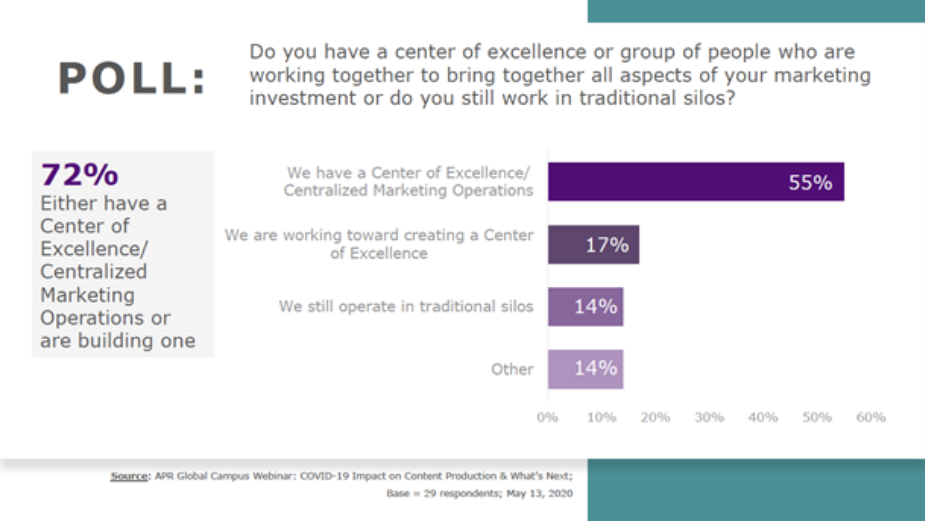
LBB> How do you get onto the RFI/RFP ladder as a new company?
Jillian> It has been the agency’s job in the past to find new companies to put on the radar and share with the client. However, as advertisers continue to take greater control over content creation, it is the advertiser to whom the new company should be pitching. The trouble is it can be hard to get through to the marketing organisation. I see many challenges in today’s marketplace for the suppliers, the agencies, and the advertiser to address how to find, and even more importantly, vet the new companies.
The challenge for many agencies today is that it can be difficult to invest in research or training due to lower overhead and profit margins to cover these costs, which may explain why agencies tend to work with the same companies over and over again. Adding fuel to the fire, some agencies may have a self-serving interest to bring work in-house or into their holding company network, and therefore, they don’t have the incentive to look for new companies/solutions outside.
Pre-covid, new companies could be found at industry conferences in booths or on stage, but since conferences aren’t happening, it is challenging for the vendor to break through at this moment. This will change soon, but in the meantime, I suggest companies vet and share information about their experiences with new suppliers and get the word out.
LBB> How much of the RFP process is driven by cost?
Jillian> Although cost is a driver, the need to be effective in driving change carries equal weight. Most of today’s content production RFPs are driven by a need to do something different to meet the scale and types of content needed. Marketing organisations are seeking a more economical and efficient way to produce content.
It’s worth pointing out that the RFP process can take several months before it is complete, the partner is chosen, is appropriately onboarded, and officially engaged. This means in some instances that the marketer, who is trying to keep up with the pace of change, won’t introduce a new solution to their organisation or realise the benefits for a full year! This is very problematic for our industry as we need to have faster solutions to keep up, and so consequently, the RFP process is in dire need of improvement.
LBB> And what’s the key to changing that length of time?
Jillian> I think there are a couple of ways we can approach this problem. Change the RFP process to a rapid one, where you choose a company quickly, conduct a pilot, and begin to see the benefits while learning from the pilot. Or, just shortcut the RFP process altogether, engage in a new solution right away, learn, and iterate as you go. Using a company like APR, or a subject matter expert who has the knowledge to independently and objectively vet the solutions on behalf of the marketing organisations (with no ties to any outcome), and then rollout the new solution so that all parties are successful, is an important ingredient to expediting the process.
LBB> Do you feel smaller indies are able to offer production as well as media placement?
Jillian> The industry has one foot still firmly placed in the traditional model and one in trying to understand how best to leverage today’s breadth of platforms and options. We’re still discovering this as an industry, and I do think these smaller suppliers can navigate the newer world with fresh eyes and a new approach. They’re trying things that are more innovative than the legacy approach to production.
We’ve seen that some media platforms, channels or companies provide free production of assets, included in their media buy. No production is ‘free’. Someone is paying for it somewhere because you’ve got crew and talent involved and they are not going to work for free. Having a media company produce content isn’t always optimal, as the quality and branding can be compromised and requires more attention and coordination to work. At APR, we use something called an RPV (Relative Production Value) and we extract the value of what that asset would have cost to produce from the media buy to see the real value of the media. You can build on that from there to get to the best offering.
LBB> Do too many people rely on the usual suspects from pitch to pitch?
Jillian> As I mentioned earlier, all too often agencies and clients default to using the same companies over and over and they like the familiarity with which they can develop a cadence or common language to get the work done in a timely and effective manner. This is human nature. In compressed timelines, agencies and clients feel more comfortable going to companies they have tried and tested. The challenge is in making the time to find new companies and learn more about how existing companies are changing.
In the advertising industry, it is difficult to break into the pitch unless someone is familiar with you. That’s an important issue when it comes to bringing new models into the pitch process. It’s also a challenge when reaching to achieve diversity goals, because the diverse resources may not be known entities. And to put a plug in for tracking diverse suppliers, we should be tracking who actually wins the work, as opposed to just how many diverse suppliers are being asked to the dance (or invited to the pitch).
LBB> And when it comes to assets, how important is it for a brand to hold their own production masters and library of assets?
Jillian> I’ve always been a strong supporter of brands owning their own assets because it gives them flexibility to use those assets in other ways – across agencies or platforms. Having a library of assets that can be repurposed is critical. We saw this at the beginning of covid when we couldn’t shoot anything original as live-action production shut down for several months. Many brands could not find their existing assets. Typically, the brands rely on their agencies to store and manage their creative assets, but agencies of record change and the assets get lost in the transition. Clients who are taking on more control of their production have an even more important role in managing their assets. I believe a marketer needs to own their creative asset strategy to extract the full value from their productions. Also, it is important for brands to have a strategy to centralise the tracking and managing of the rights associated with those assets to avoid or mitigate any risks or high fees.
LBB> Have brands started to realise this through covid?
Jillian> More and more are. The role of the librarian is key and is often underestimated. Some brands take the asset control in-house, which is a great role for the in-house team, by the way – to centralise everything there. But I’ve seen where brands assign the asset control back to their agencies after many years of not committing to a librarian role. The winners will be the companies who own and manage their own assets, as they can act quickly, be flexible, control costs associated with rights management and most of all, brand consistency. You see, marketers need more flexibility to move from agency to agency in their plug and play ecosystem, so their library of assets really needs to be a priority, otherwise there’s a lot that will be lost.
LBB> With near-shoring and off-shoring, has the pandemic shown people that distance for partners is less important?
Jillian> This is some of the good that’s coming out of the pandemic. It’s forcing us to work differently and allowing us to access talent that we never would have accessed. It’s really exciting and those who embrace that will do some great things. Those who are expecting the industry to go back to the way it once was will lose out in the long run. There’s a lot that needs to be updated in the content creation process, and this is the time to make those changes. Creators want to create and they will find a way - I’m loving the changes that we’re seeing and I want us to hold onto them.
LBB> Where do you advise your clients to invest in terms of production now?
Jillian> We advise our clients to step back and look at overall content creation planning for the new way of doing things. It’s important to have a flexible structure and put together an approach and a plan to support the changes that need to take place in the ecosystem of tomorrow. Investing in that planning is the first thing we recommend. Then, we advise that the agencies be taken along on the journey or involved in defining it. The agencies don’t have all the answers right now but are trying to work in new ways, so let’s not throw the baby out with the bath water. Any change needs to be intentional and we can’t expect people from the traditional content creation model to just embrace new titles and new roles and new assignments without training and encouragement and guidance. All parties need to develop new behaviours, new models and define new relationships in order for growth and transformation to happen well.
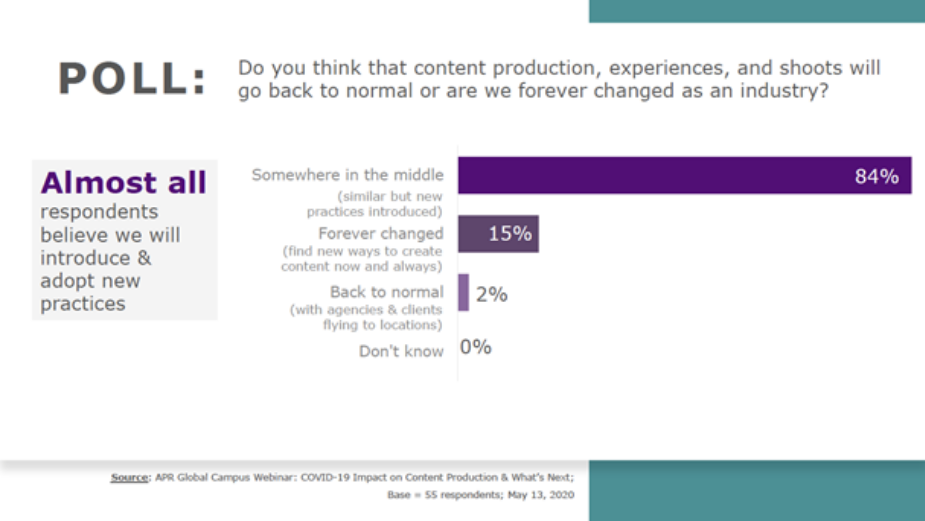
LBB> If you could give an agency advice on what they should be doing what would that be?
Jillian> The value is in the seams of how all of a client’s partners work together, so I would recommend agencies spend some time with other agencies that work with their client. Done effectively, that integration can ensure the sum of the parts is greater than the whole. Don’t think of yourselves in a silo.
LBB> What do you think an agency should be used for now?
Jillian> Agencies are really needed in this complex and fast-paced world we live in. I think agencies play a very key role in strategy, planning and campaign ideation. Content creation can be part of that, but it doesn’t have to be. Someone else can produce or even create the ideas to support the strategy. But the strategy and planning are so important in today’s digital world that I can see that happening more.
LBB> Lastly, what do you think production will look like in five years?
Jillian> If I were to look five years out, I’d predict that we, as an industry, will get better at approaching the high-end storytelling work differently from the low complexity work. We will see more automation, where it’s desperately needed. There will be more centralisation of assets and rights, which requires careful and thoughtful planning. And I think there will be more data and information available and used in a way to help us get to a better ROI and decision making.







